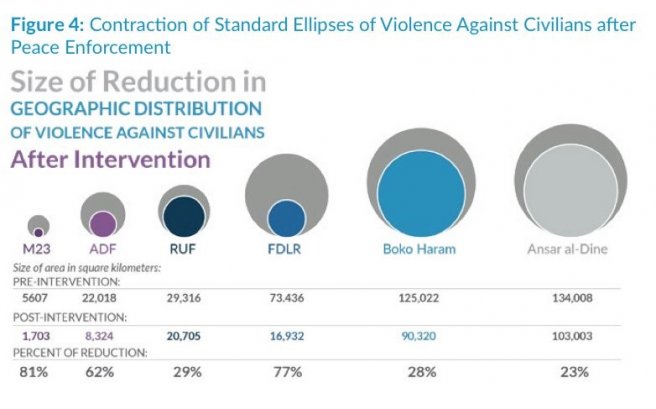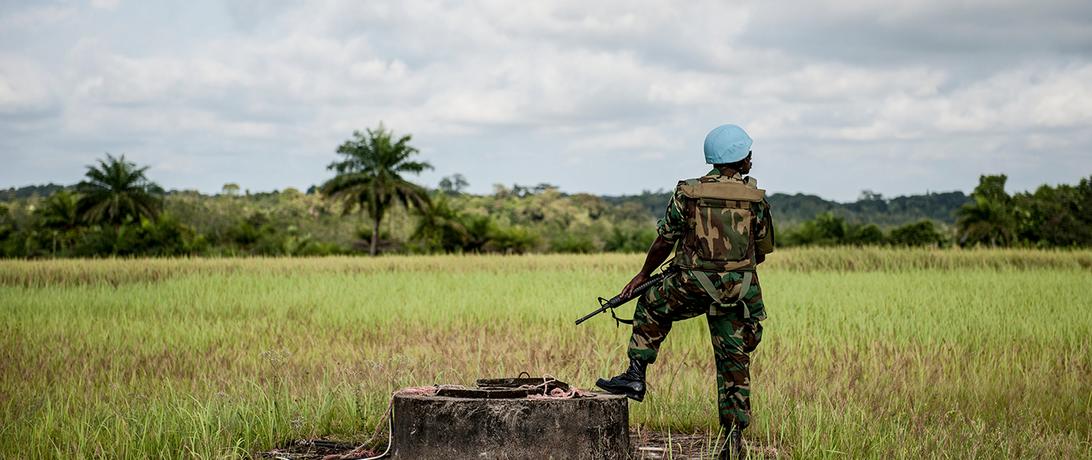In June 2017, the United Nations cut $600 million dollars from the peacekeeping budget for the fiscal year. This may in fact be just the first wave of cuts. Yet, while resources are shrinking, peacekeeping missions are being asked to do more, particularly regarding the use of force to protect civilians.
One way to determine where funds are best used to protect civilians is to better understand where violence most frequently occurs within a conflict zone. OEFR is particularly interested in how, or if, militant groups change where they target civilians in reaction to peacekeeping interventions. Our research indicates that when peacekeepers are present rebel violence against civilians is concentrated in smaller geographic spaces as shown in the figure below.

This has important ramifications for how UN peacekeeping missions prioritize which communities are in the greatest need of protection. To read more about the findings and what they mean for protection of civilians in UN peacekeeping, take a look at my recent blogpost in Political Violence @ a Glance or read our policy brief, Peace Enforcement and the Geography of Violence against Civilians.
